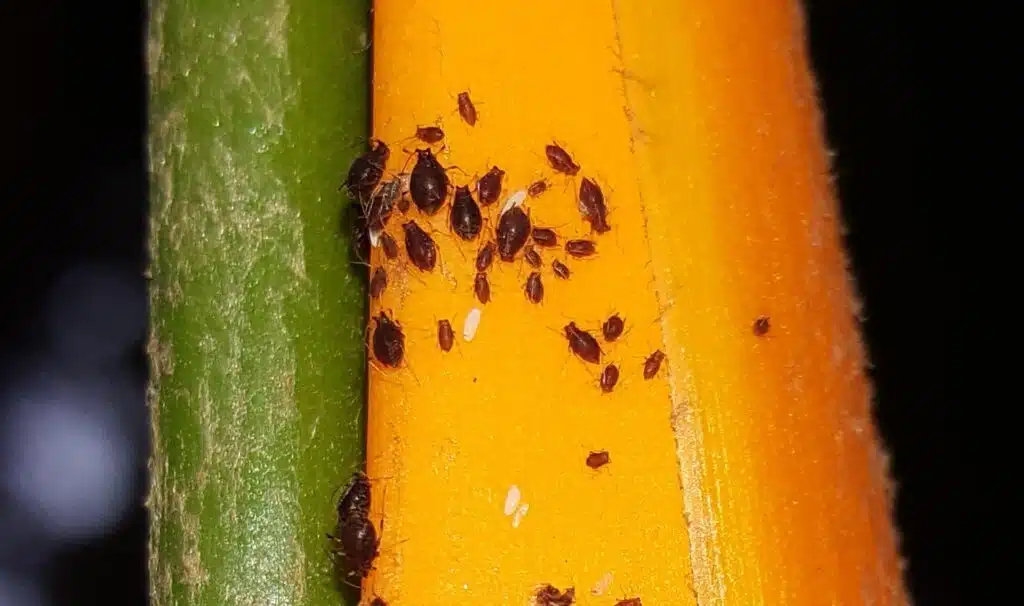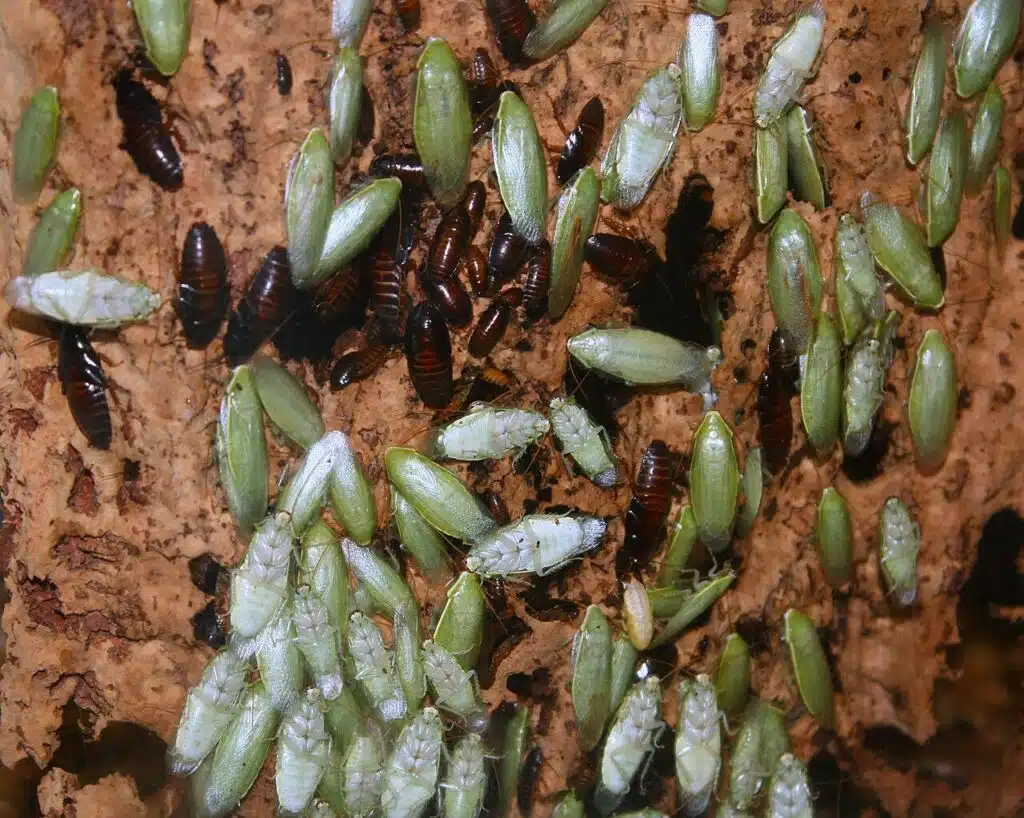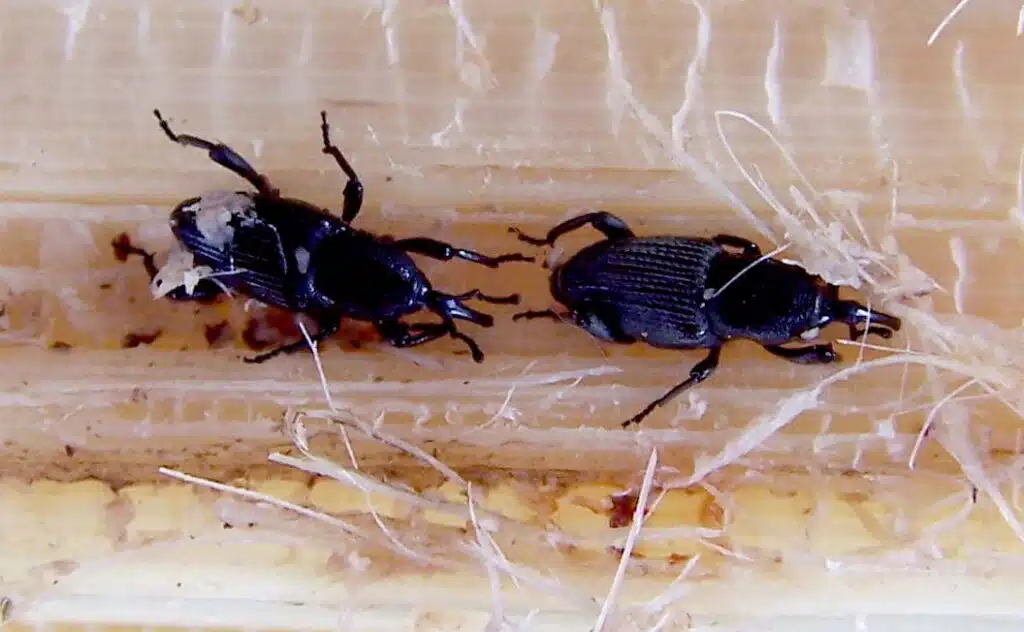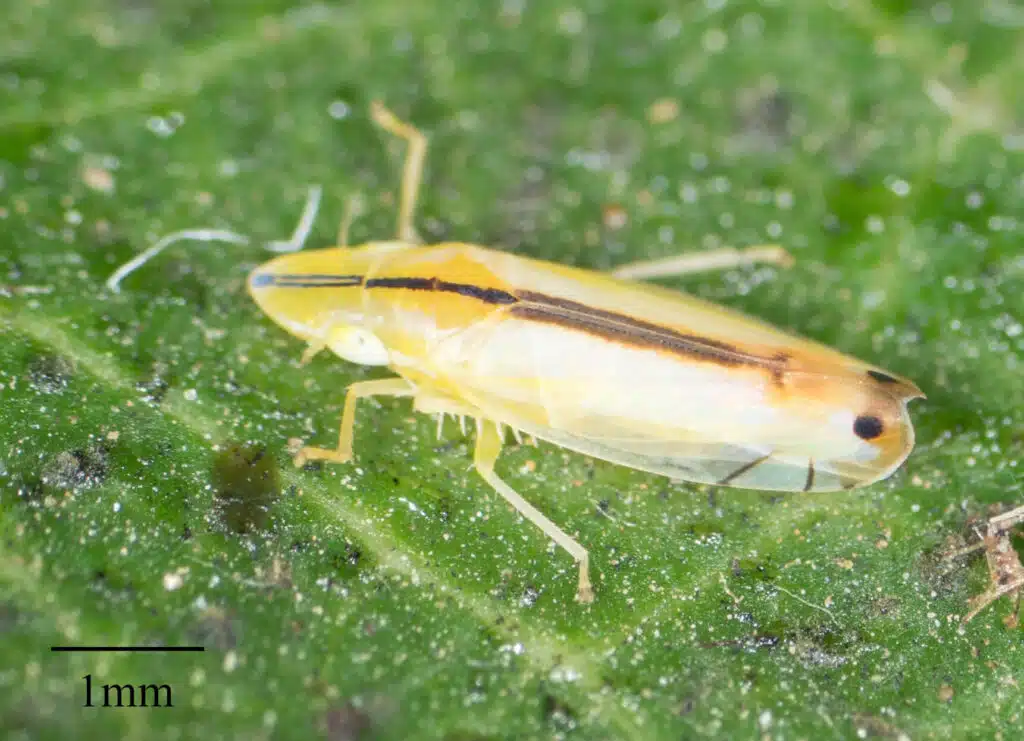Bananas are subject to both specific and polyphagous bug invasions.
Plantations around the world can be impacted by visible pests such as aphids or hard-to-spot pests such as burrowing banana weevils.
Poor preventive measures on plantations are among the first reasons various types of bugs impact bananas.
They can suffer visible damage through the darkening of the fruits, which makes them a lesser-value product in trading.
Bananas can also suffer considerable damages which might even kill the host trees when infested by some of these bugs.
Roundworms and mealybugs are among the most problematic species when it comes to stunted growth or even host tree death.
Proper preventive measures in either the warm season or the rainy season can stop to spread of most bugs that impact bananas.
Table of Contents
1. Mealybugs
Some types of mealybugs are known to use bananas as hosts. These are small bugs covered in a white wax-like substance.
Small and only easily visible when in groups, mealybugs can be seen as a major problem for bananas.
Female Banana Mealybugs (Pseudococcus elisae) lay eggs in clumps on the underside of banana tree leaves.
These bugs aren’t always a serious problem but they quickly become an issue to deal with in the case of large infestations.
Banana mealybugs impact the banana tree considerably. Management techniques should be considered long before the leaves start to become yellow or to lose vigor.
Frequent pruning is one of the recommended management techniques against mealybugs as this helps you discover the invasive species before it damages trees.
Promoting or buying predatory bugs is also a known method of dealing with mealybugs.
A few hundred predatory bugs such as ladybirds can help eradicate all mealybugs in an area.
2. Roundworms (Nematodes)
Nematodes are a type of roundworm that can kill banana trees. One of the worst traits of this species is that it’s not visible to the naked eye.
These microscopic roundworms feed on the roots of the banana tree. Their damages are small at first but they can quickly become a major problem.
In the worst cases, banana trees lose root vigor and may even topple.
Serious management techniques are required to save bananas before this species settles on the roots.
Crop rotation is among the common methods of keeping trees away from these nematodes.
It takes about 2 years for the soil to be ready for planting banana trees again.
Permanent plantations require diverse preventive measures.
Adding marigolds and other plants these roundworms hate between the trees is a common practice.
Pesticides can seem like a good idea at first. However, roundworms are eventually going to become resilient to common pesticides.
3. Banana Aphids

You can identify banana aphids by a black bulbous body with 2 rear projections.
These types of aphids are seen in different parts of the world with different levels of pest status according to their range.
Australia is among the countries where banana aphids are both a mild and a severe pest, depending on their region.
These types of bugs don’t eat sufficient leaves or fruits to cause significant tree damage.
It’s the honeydew that covers tree leaves resulting from their feeding that damages the trees.
Stopping proper photosynthesis and even promoting plant viruses, honeydew is the biggest enemy when it comes to banana aphids.
Chemical-based control is the last resort in the case of serious infections.
These types of aphids are often controlled through the introduction of predatory ladybugs.
Lacewings often feed on these aphids as well.
They are sometimes introduced to severed infestations on plantations, including fruit infestations of the Pentalonia aphids.
Removing all weeds around the banana tree is also a considered aphid-prevention measure.
4. Ants
Ants can be attracted to banana fruits indirectly. They feed on aphid honeydew and they make it onto bananas to protect these small bugs producing the sticky sweet substance.
Formic acid is sprayed by ants which want to protect the aphids. This acid causes black spots on bananas.
The damages are only cosmetic, as the fruits can still be eaten. However, impacted bananas have a lesser retail value.
Ants around the world may impact the growth and selling of bananas.
Crazy ants and white-footed ants are among the common species impacting bananas in Hawaii.
These types of ants spray abdominal secretions known as formic acid to protect aphids or as a response to insecticide use.
Dealing with the ants involves removing aphids.
Baits might also be a good solution against a large number of ants overtaking banana trees.
Insecticidal baits may be less damaging than spraying insecticide over banana trees.
5. Banana spiders
A banana spider is a generic name attributed to spiders found in banana shipments.
These types of shipments arrive in North America from warm climates such as Brazil and Hawaii.
Banana spiders get inside the shipments, even if not as common as other types of spiders.
These spiders might also bite, as with any type of spider.
Brazilian Wandering Spiders are among the most dangerous species that can come in with banana shipments.
This is a brown spider that grows to 48mm. Easily spotted due to its large size, this spider is considered highly venomous.
Hawaiian Garden Spiders also come in with banana shipments.
A brown color is specific to males while a yellow color is in females.
This species might grow even larger than Brazilian Wandering Spiders. However, there’s no venom for humans to worry about in this species.
6. Cuban cockroach

Native to Cuba, these cockroaches often make their way with banana shipments to the US.
Cuban cockroaches are some of the smallest cockroaches in the world. They have a distinct pale green color and are known for eating all types of vegetation and fruits.
With a particular taste for sweet foods, this species can also be interested in eating bananas or banana leftovers.
These cockroaches are also popular in the pest industry where they are sold as food for other species.
Cuban cockroaches are among the most common species to only live outdoors.
They pose no risk for indoor invasions as the species only likes to live outside.
These cockroaches are also safe when in contact with humans. They don’t bite and their reduce body size doesn’t make them a considerable problem in case they try to bite regardless.
Cuban cockroaches can fly over short distances.
7. Banana weevils
Banana weevil borers are among the unseen pests of bananas. They only grow and live in the ground, feeding on roots with various impact degrees.
Some types of banana weevils are also known for eating through leaves until they reach roots and stems.

Banana root borers (Cosmopolites sordidus) are specific to plantations that aren’t properly managed.
East Africa is one of the regions with a higher risk of banana weevil infestations.
Australia’s regions such as Queensland are also known to suffer from these bug invasions.
One of the biggest issues with banana weevils is that they aren’t visible and they may affect bananas without any visible signs at first.
These types of bugs can be lured with traps to identify their presence before deciding to take chemical action against them.
Warm months pose a higher risk for these weevils, as do wet periods of the year.
These are the standard periods when plantations need to be observed more frequently.
8. Thrips
Some thrips tend to be found on various types of banana plantations. Australia is one of the world regions with a higher risk of thrips on bananas.
- Banana flower thrips (Thrips hawaiiensis)
Corky scan is caused by these thrips. Part of Australia’s Queensland is the most likely place to see some type of problem with these pests, particularly on bananas.
These small black and yellow thrips only grow to 1mm.
Preventing these types of thrips that sometimes nest in flowers often involves introducing predatory species.
Lacewings are among the most common predators of Banana flower thrips.
- Banana rust thrips (Chaetanaphothrips signipennis)
Banana rust thrips are only slightly larger than Banana flower thrips as they grow to 1.5mm.
Small eggs are laid around plantations that are too small to be visible to the naked eye.
These thrips leave V-shaped marks across their infested areas of the fruit and may need to be dealt with by chemical treatments in case of heavy infestations.
Ladybugs and lacewings are sometimes introduced as non-invasive control agents against small bugs.
- Banana-silvering thrips (Hercinothrips bicinctusare)
This is one of the rarest types of thrips on bananas. It only appears on green bananas.
Excrements on bananas are the signs these thrips are present on cultivars.
Bananas may turn brown in the more serious invasion cases.
Banana-silvering thrips may be controlled through proper weeding techniques.
Spraying insecticides might be the only true measure against these thrips when it comes to large-scale invasions.
9. Two-spotted Leafhopper

This species has been identified in North America as it’s believed to have an Asian origin.
As a polyphagous species, it affects hundreds of host plants with a growing presence on banana plantations.
Leaf sap is its primary food.
Two-spotted Leafhoppers are a rare banana bug that can damage hosts in low numbers. A high feeding habit makes this species even more dangerous than other banana bugs.
These leafhoppers have a growing Hawaii presence where natural predators and parasitoids have been introduced to control Two-spotted Leafhoppers.
Fairyflies are among the most successful Two-spotted Leafhopper egg parasitoids in Hawaii.
Polynema fairyflies are commonly used against this invasive species both in Hawaii and in other Southern US states where the species has migrated. This includes areas of California and Texas.